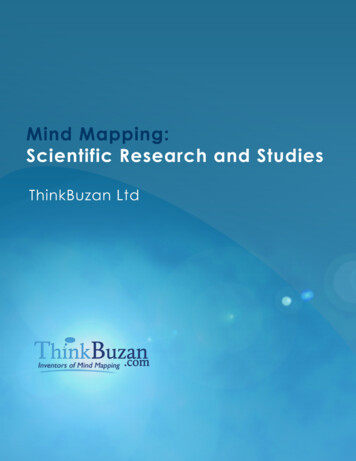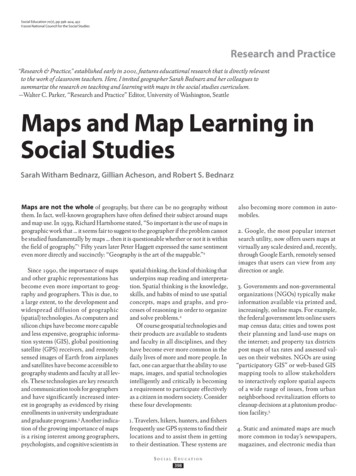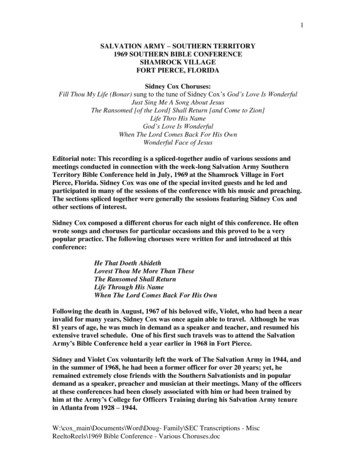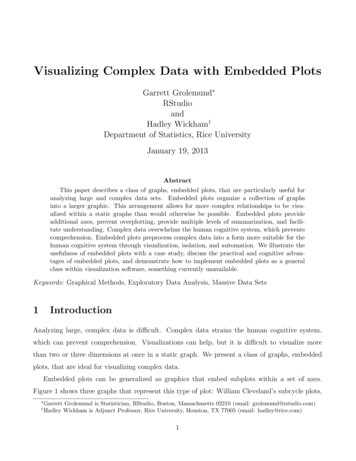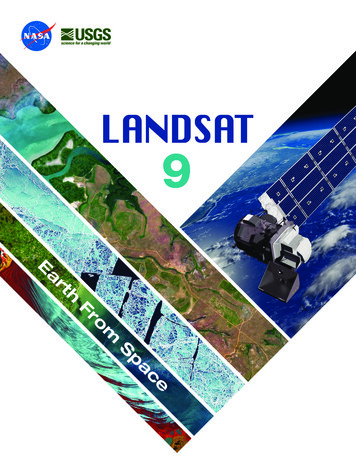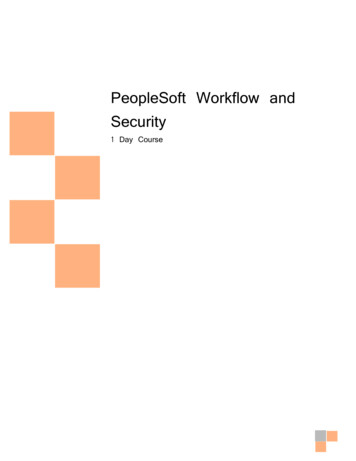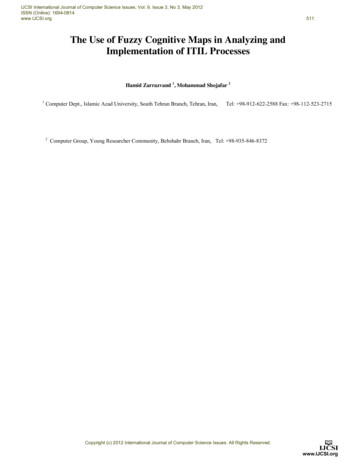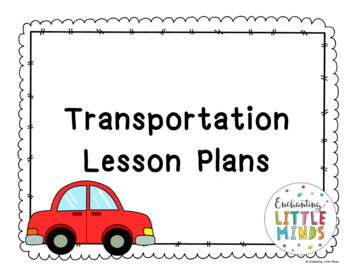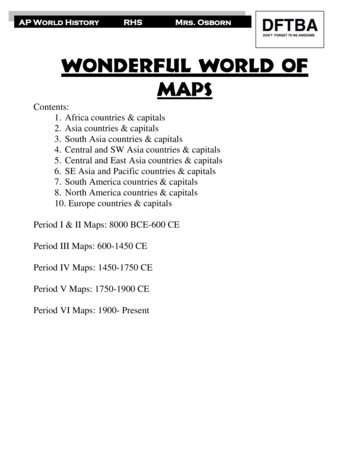
Transcription
AP World HistoryRHSMrs. OsbornWonderful World ofMAPSContents:1. Africa countries & capitals2. Asia countries & capitals3. South Asia countries & capitals4. Central and SW Asia countries & capitals5. Central and East Asia countries & capitals6. SE Asia and Pacific countries & capitals7. South America countries & capitals8. North America countries & capitals10. Europe countries & capitalsPeriod I & II Maps: 8000 BCE-600 CEPeriod III Maps: 600-1450 CEPeriod IV Maps: 1450-1750 CEPeriod V Maps: 1750-1900 CEPeriod VI Maps: 1900- Present
PERIODS I & II (8000 BCE – 600 CE)River Valley Civilizations: Egypt (Nile), Mesopotamia/Sumer (Euphrates/Tigris), Shang China(Yellow/HuangHe), Harappa/Mohenjo-Daro (Indus)The first Mesoamerican civilization. Between ca. 1200 and 400B.C.E., the Olmec people of central Mexico created a vibrantcivilization that included intensive agriculture, wide-rangingtrade, ceremonial centers, and monumental construction.The Olmec had great cultural influence on later Mesoamericansocieties, passing on artistic styles, religious imagery, sophisticatedastronomical observation for the construction of calendars, and aritual ball game.The first major urban civilization in South America(900–250 B.C.E.). Its capital, Chavín de Huántar, waslocated high in the Andes Mountains of Peru. Chavínbecame politically and economically dominant in adensely populated region that included two distinctecological zones, the Peruvian coastal plain and theAndean foothills.
City-states of Ancient Greece 800-300 BCEExtent of Roman Empire c.500 BCE-400 CERomans built an elaborate system of roadsand aqueducts
Ancient and Modern African CivilizationsBonus Map:China and JapanBantu Migrations
Spread of Islam in North Africa and Middle East
PERIOD III (600-1450 CE)Islam in African Interior“Swahili Coast”- Relationship between trade,religion, culture.What is Swahili? A Bantu language that is about35% Arabic resulting from centuries of tradecontact with Arabs. It is now the lingua franca ofmuch of eastern Africa (see map). Part of easternAfrica is also Muslims. Dar es Salaam (House ofPeace) is the capital of Tanzania.
Mongol Empire (13th-14th c.)Viking Invasions of Europe
Crusades c.1095-1300 CEMarco Polo’s Travels 1200sIbn Battuta’s Travels 1300s
Silk RoadNote these cities: Dunhuang, Kashgar, Samarkand, Bukhara
Late Middle Ages- Important Places to KnowName this trade system:What religion is spread here?Name this trade system:What religion is spreading here?
Name this trade system (note all the regions involved):What disease is spreading here?What is the relationship between trade and religion, politics, social change, etc? What happens when peoplecome in contact with each other? Examine the maps and come to at least 2 conclusions with examples:PERIOD IV (1450-1750 CE)Dutch Exploration- 16th century
Columbian Exchange(below)
West AfricaNote the specific tribes andkingdoms that served assources for the slave trade:Oyo, Dahomey, Ashanti,Benin, Kongo, YorubaBelow: Note the mainimporters of African slaves:Brazil and Caribbean
Songhai Empire, Islamic successor to MuslimMali Empire of the 14th century, was located in astrategic location: a major terminus of trans andsub-Saharan trade routes. Timbuktu and Gao (notto be confused with Goa, in India) were maincenters of gold, ivory, salt, and copper.(Below) Gunpowder empires: Ottoman, Safavid,Mughal rise in the 15-16th centuries.
Rise gal.
PERIOD V (1750-1900 CE)It peaTIMELINE: Rise and fall of the British Empire.around WWI, then began a steady decline.
Latin AmericanindependenceForces of nationalism, a comparison. It had negative effects in Austria-Hungary, Russian Empire,and Ottoman Empire in the latter part of the 19th century because of a multitude of ethnic groups withintheir domains. Germany and Italy, in contrast, achieved unification in 1871 as a result of nationalistforces. Also, nationalism began to spur independence movements in colonies (INC created in 1885).
Scramble for AfricaNote which European powers had territory and where:French north and west Africa, British East (Kenya,Tanzania), North (Egypt, Sudan) and Southern (SouthAf, Rhodesia (Zimbabwe)) Africa mainly, BelgianCongo, Portuguese in Angola.The Demise of the Ottoman Empire, beginning with nationalist movements in Balkans and Egypt. INthe “big picture” of things, the rise and fall of the Ottoman Empire can be visualized in this way:Rising in the 15th-16th c. (reaching its peak when Mehmet sacked Constantinople in 1453 and Suleimanlaid siege to Vienna in 1529), stagnating in 17-18th c., and finally declining in the early-late 19th c.
Ottoman losses in the Balkansleading up to WWI and thefinal dissolution of theempire. The Ottomans lostGreece, Bulgaria and Serbianin the latter part of the 19thcentury.Decline of Qing Empire19th century
PERIOD VI (1900-Present)Causes of WWI:1. Militarism2. Alliances3. Imperialism4. Nationalism5. The “spark”(assassination)
Japanese expansion continued after 1934. During the SinoJapanese War (1937-1945), Japan occupied most of China, thentook SE Asia (Indochina), the Philippines, Guam, Dutch EastIndies, and most Pacific Islands.Reasons for the expansion: Remember the “3 doors”? Door #1 immigration. Closed by anti-Japanese immigration policies ofthe West. Door #2 economic development. Closed by westerntariffs. Door #3 expansion.
Buildup toWW2Cold War EuropeNotice the 2 major military alliances.Also, most E. European countrieswere NOT part of the USSR; theywere “satellites” laying within the“sphere of influence of Moscow”(Churchill). Warsaw Pact was notmerely a military alliance againstforeign aggression. Warsaw Pactnations (except Romania) intervenedin Czechoslovakia during the PragueSpring 1968 to restore hardlinecommunist rule.
African independence movementsAfter WWI, the formerOttoman Empire wasdivided among Europeanpowers as Mandates.Mandates were put in 3classes: A, B, C. All formerOttoman regions wereClass A mandates(“mandates which aredeemed to reached a stageof development where theirexistence as independentnations can beprovisionally recognizedsubject to the rendering ofadministrative advice andassistance by a Mandatoryuntil such time as they areable to stand alone”). Mid.East nations believed itwould be temporary, butthey lasted until afterWWII.
End of colonialism in Asia. Year of independence in parenthesis.
1989Collapse of communism in EasternEurope. Began with the Fall of BerlinWall (symbolic of communist bloc).The fall of the USSR would follow in1991, primarily due to economic problems.The Soviet economy had failed tomodernize and keep up with the fastgrowing, technologically driven economyof the U.S. and some Asian nations.Gorbachev’s perestroika and glasnost wereattempted reforms but they had theopposite effect. The real eventual effect ofperestroika was the dismantling of theSoviet command economy replaced by agradual market economy. While glasnost(openness) led to the government losingcontrol of the media and Soviet peopledemand major changes.
Major world oil production
1 out of every 5 people on planet earth is Chinese or India (if you combine Pakistan and Bangladesh).According to the pie chart, what region is expected to grow the fast in the next 15 years? Which regionwill lose the greatest population. What do you notice about those regions? Hypothesize as to why theywill lose/gain population.Functions andorganization of UN.Know the permanentmembers of security council:U.S., Russia, China, France,Britain. The Security Councildecides on any militaryaction. What problems doyou think might arise amongSecurity Council membersduring Cold War? Whatabout today? Why? THINK!
AP World History RHS Mrs. Osborn Wonderful World of MAPS . River Valley Civilizations: Egypt (Nile), Mesopotamia/Sumer (Euphrates/Tigris), Shang China (Yellow/HuangHe), Harappa/Mohenjo-Daro (Indus) The first Mesoamerican civilization. Between ca. 1200 and 400 B.C.E.,
